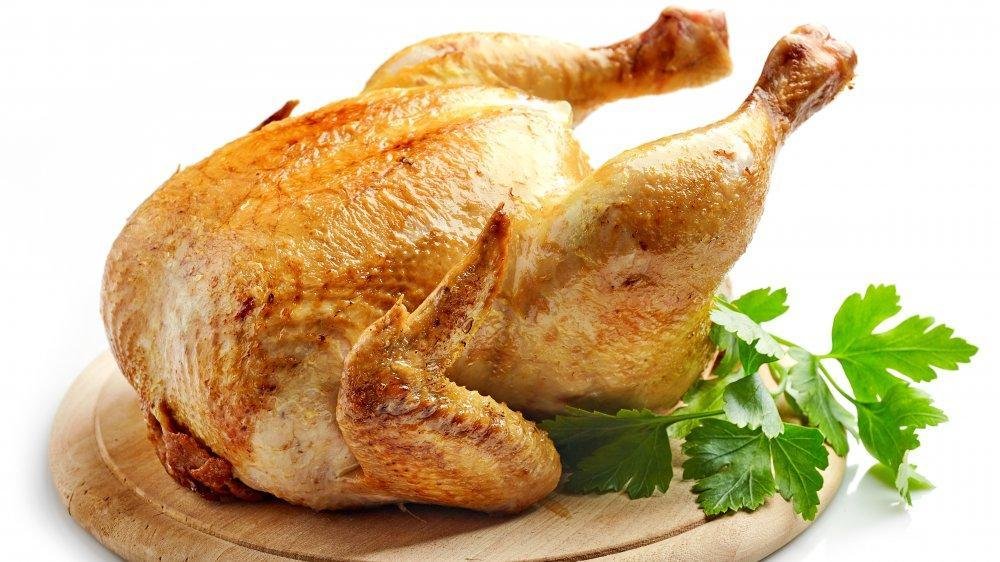
Fried chicken is great. Fried chicken dunked in sauce and served with more sauce is even better. Chicken wings, whether served with a tried-and-true combination like classic Buffalo sauce and blue cheese dressing or with a spicy gochujang sauce like in this Korean fried chicken recipe, are downright addicting. Let’s not sleep on the dry rubs either. Who doesn’t love a zingy lemon pepper?
Before getting to the flavor decision or even the question of drums or flats, another question takes priority. Boneless or bone-in? The NPD Group addressed the conundrum in a report titled “The Chicken Wing Dilemma.” They found that 64% of consumers opted for bone-in wings while only 36% chose boneless, despite the higher price point for bone-in.
That may be because bone-in wings just taste better. When chicken is cooked on the bone, it retains more moisture, and the bone itself imparts a deeper savory flavor to the meat. Furthermore, bone-in wings are skin-on, and that fat has a lot of flavor.
Boneless wings are truly just chicken tenders

Contrary to the beliefs of some, a boneless wing is not a deboned wing. It is simply a piece of boneless skinless chicken breast, sometimes formed into the shape of a poser chicken wing, and then breaded and fried. Boneless chicken wings aren’t actually wings, and some might even go so far as to call them chicken nuggets. Gasp.
If that is what you’re into, more power to you. You’ll definitely save a few bucks if you opt for the boneless option. The Associated Press notes that the average price for prepared boneless wings came in at around $4.99 per pound while bone-in wings cost about $8.38 per pound. Calling boring chicken breast pieces boneless wings is really just great marketing.
What they may lack in flavor, they certainly make up for in ease of consumption. Wrestling with those little bones with a beer in hand, a plate balanced on your knees, and a sports game blaring does seem like a recipe for some serious spills. Even a bone-in purist could admit that there is a time and a place for all your fried chicken wants and needs
The Common Myths About Chicken That Are Actually False

Chicken is a traditional, delicious addition to plates around the world. On average, people in the U.S. consume a staggering 201 pounds of meat annually. Chicken reigns supreme comprising almost half of the meat consumed, further outranking its standard competitors — almost double the amount of beef and pork eaten per person. Gone, however, are the days where the majority of chickens roam a cooks’ backyard before reaching the plate. This disconnect of where and how our meat is raised could be, in part, why so many myths still exist about the best way to buy, prepare and cook the popular dish.
One reason for chicken’s popularity is that poultry acts as the ideal blank slate for sauces or as a tender centerpiece of a meal. Fried, battered, grilled or roasted, personal preferences on how chicken “should be” cooked have often been shaped by the generation before. Unfortunately, many cooking myths have also been passed along with this knowledge. Today’s shoppers instead are navigating a new set of rules. Many of the myths about chicken that need to be dispelled will help the culinary-inclined to make better decisions about their food, even before it reaches the kitchen counter.
These are the common myths about chicken that are actually false.
You should remove the skin before cooking chicken

Plus, any cook that is still skeptical should be aware removing chicken skin before cooking dries out the tender meat. Leaving the skin on not only results in a moist and flavorful dish, but lets cooks use less salt in preparation. Salt might be an excellent way to flavor meat but too much leads to high blood pressure, heart disease, and stroke. So much for all the good fats.
By leaving on the skin, you can also negate the need for using any less health-conscious coatings — even though breaded chicken makes for a mouth-watering meal. Chicken skin is actually the healthy and delicious choice for today’s kitchen.


